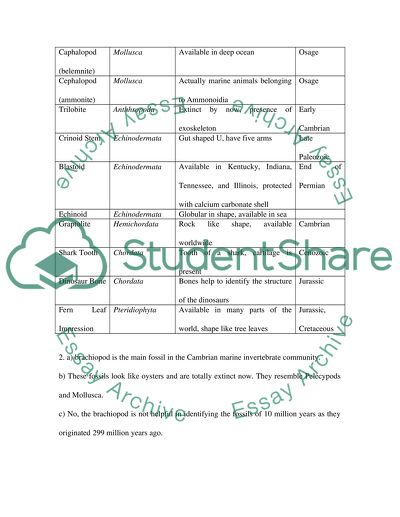Paleozoic Fossils Essay Example | Topics and Well Written Essays - 500 words. https://studentshare.org/archaeology/1529442-paleozoic-fossils
Paleozoic Fossils Essay Example | Topics and Well Written Essays - 500 Words. https://studentshare.org/archaeology/1529442-paleozoic-fossils.


